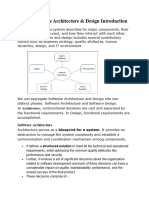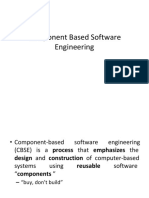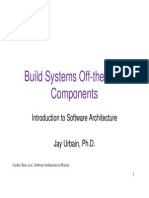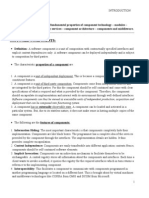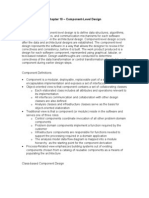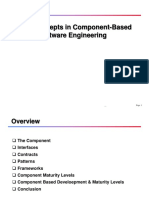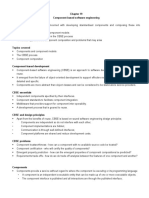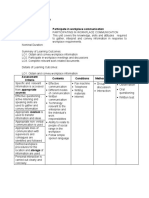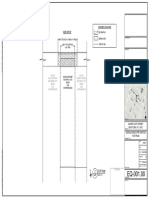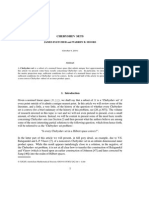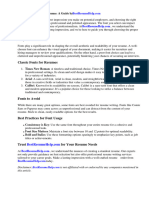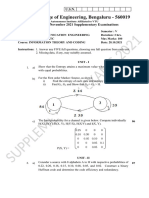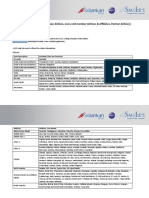Component-based architecture
Component-based architecture focuses on the decomposition of the design into
individual functional or logical components that represent well-defined communication
interfaces containing methods, events, and properties. It provides a higher level of
abstraction and divides the problem into sub-problems, each associated with
component partitions.
The primary objective of component-based architecture is to ensure component
reusability. A component encapsulates functionality and behaviors of a software
element into a reusable and self-deployable binary unit. There are many standard
component frameworks such as COM/DCOM, JavaBean, EJB, CORBA, .NET, web
services, and grid services. These technologies are widely used in local desktop GUI
application design such as graphic JavaBean components, MS ActiveX components,
and COM components which can be reused by simply drag and drop operation.
Component-oriented software design has many advantages over the traditional object-
oriented approaches such as −
Reduced time in market and the development cost by reusing existing
components.
Increased reliability with the reuse of the existing components.
What is a Component?
A component is a modular, portable, replaceable, and reusable set of well-defined
functionality that encapsulates its implementation and exporting it as a higher-level
interface.
A component is a software object, intended to interact with other components,
encapsulating certain functionality or a set of functionalities. It has an obviously defined
interface and conforms to a recommended behavior common to all components within
an architecture.
A software component can be defined as a unit of composition with a contractually
specified interface and explicit context dependencies only. That is, a software
component can be deployed independently and is subject to composition by third
parties.
Views of a Component
A component can have three different views − object-oriented view, conventional view,
and process-related view.
Object-oriented view
A component is viewed as a set of one or more cooperating classes. Each problem
domain class (analysis) and infrastructure class (design) are explained to identify all
attributes and operations that apply to its implementation. It also involves defining the
interfaces that enable classes to communicate and cooperate.
Conventional view
It is viewed as a functional element or a module of a program that integrates the
processing logic, the internal data structures that are required to implement the
processing logic and an interface that enables the component to be invoked and data
to be passed to it.
Process-related view
In this view, instead of creating each component from scratch, the system is building
from existing components maintained in a library. As the software architecture is
formulated, components are selected from the library and used to populate the
architecture.
A user interface (UI) component includes grids, buttons referred as controls, and
utility components expose a specific subset of functions used in other
components.
Other common types of components are those that are resource intensive, not
frequently accessed, and must be activated using the just-in-time (JIT)
approach.
Many components are invisible which are distributed in enterprise business
applications and internet web applications such as Enterprise JavaBean
(EJB), .NET components, and CORBA components.
Characteristics of Components
Reusability − Components are usually designed to be reused in different
situations in different applications. However, some components may be
designed for a specific task.
Replaceable − Components may be freely substituted with other similar
components.
Not context specific − Components are designed to operate in different
environments and contexts.
Extensible − A component can be extended from existing components to
provide new behavior.
Encapsulated − A A component depicts the interfaces, which allow the caller to
use its functionality, and do not expose details of the internal processes or any
internal variables or state.
Independent − Components are designed to have minimal dependencies on
other components.
Principles of Component−Based Design
A component-level design can be represented by using some intermediary
representation (e.g. graphical, tabular, or text-based) that can be translated into source
code. The design of data structures, interfaces, and algorithms should conform to well-
established guidelines to help us avoid the introduction of errors.
The software system is decomposed into reusable, cohesive, and encapsulated
component units.
Each component has its own interface that specifies required ports and provided
ports; each component hides its detailed implementation.
A component should be extended without the need to make internal code or
design modifications to the existing parts of the component.
Depend on abstractions component do not depend on other concrete
components, which increase difficulty in expendability.
Connectors connected components, specifying and ruling the interaction among
components. The interaction type is specified by the interfaces of the
components.
Components interaction can take the form of method invocations, asynchronous
invocations, broadcasting, message driven interactions, data stream
communications, and other protocol specific interactions.
For a server class, specialized interfaces should be created to serve major
categories of clients. Only those operations that are relevant to a particular
category of clients should be specified in the interface.
A component can extend to other components and still offer its own extension
points. It is the concept of plug-in based architecture. This allows a plugin to
offer another plugin API.
Component-Level Design Guidelines
Creates a naming conventions for components that are specified as part of the
architectural model and then refines or elaborates as part of the component-level
model.
Attains architectural component names from the problem domain and ensures
that they have meaning to all stakeholders who view the architectural model.
Extracts the business process entities that can exist independently without any
associated dependency on other entities.
Recognizes and discover these independent entities as new components.
Uses infrastructure component names that reflect their implementation-specific
meaning.
Models any dependencies from left to right and inheritance from top (base class)
to bottom (derived classes).
Model any component dependencies as interfaces rather than representing them
as a direct component-to-component dependency.
Conducting Component-Level Design
Recognizes all design classes that correspond to the problem domain as defined in the
analysis model and architectural model.
Recognizes all design classes that correspond to the infrastructure domain.
Describes all design classes that are not acquired as reusable components, and
specifies message details.
Identifies appropriate interfaces for each component and elaborates attributes
and defines data types and data structures required to implement them.
Describes processing flow within each operation in detail by means of pseudo
code or UML activity diagrams.
Describes persistent data sources (databases and files) and identifies the
classes required to manage them.
Develop and elaborates behavioral representations for a class or component.
This can be done by elaborating the UML state diagrams created for the
analysis model and by examining all use cases that are relevant to the design
class.
Elaborates deployment diagrams to provide additional implementation detail.
Demonstrates the location of key packages or classes of components in a
system by using class instances and designating specific hardware and
operating system environment.
The final decision can be made by using established design principles and
guidelines. Experienced designers consider all (or most) of the alternative
design solutions before settling on the final design model.
Advantages
Ease of deployment − As new compatible versions become available, it is
easier to replace existing versions with no impact on the other components or
the system as a whole.
Reduced cost − The use of third-party components allows you to spread the
cost of development and maintenance.
Ease of development − Components implement well-known interfaces to
provide defined functionality, allowing development without impacting other
parts of the system.
Reusable − The use of reusable components means that they can be used to
spread the development and maintenance cost across several applications or
systems.
Modification of technical complexity − A component modifies the complexity
through the use of a component container and its services.
Reliability − The overall system reliability increases since the reliability of each
individual component enhances the reliability of the whole system via reuse.
System maintenance and evolution − Easy to change and update the
implementation without affecting the rest of the system.
Independent − Independency and flexible connectivity of components.
Independent development of components by different group in parallel.
Productivity for the software development and future software development.









